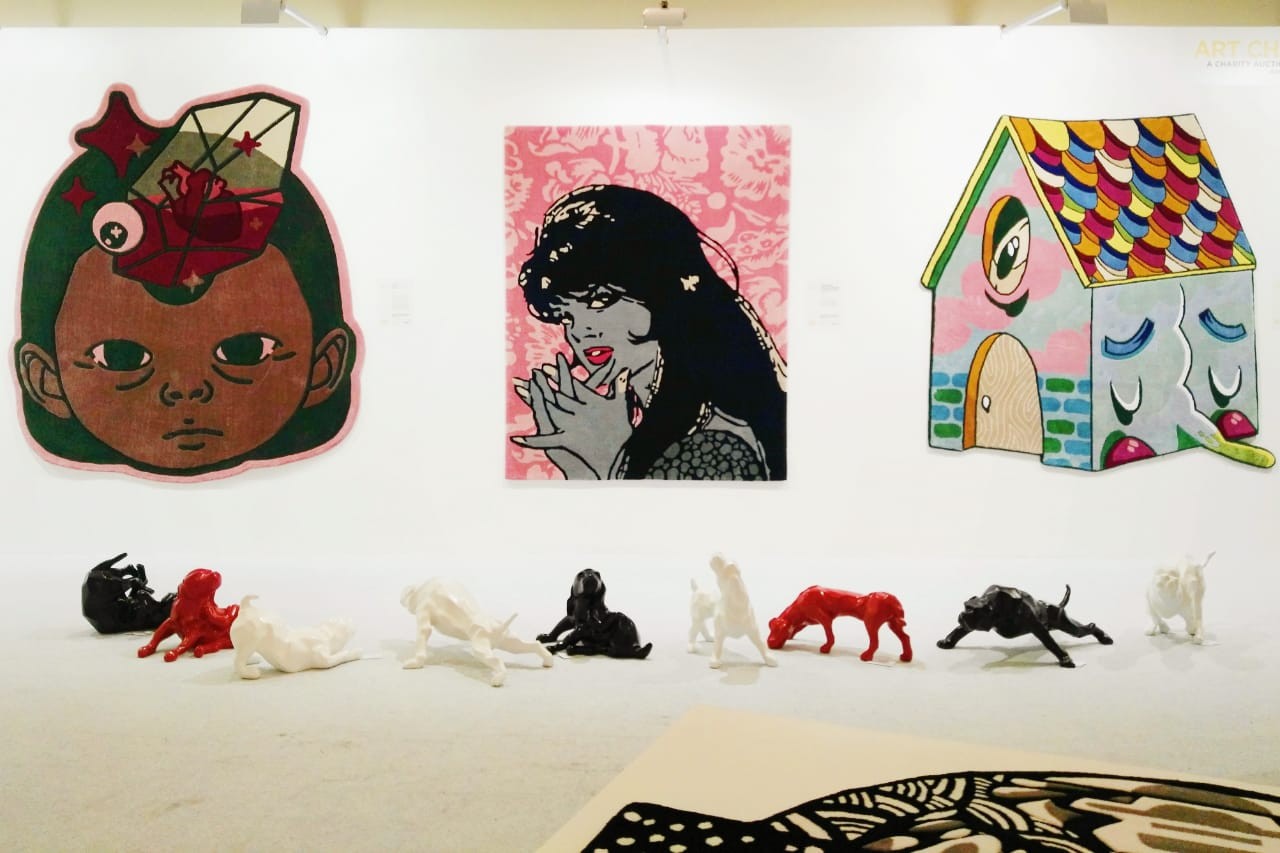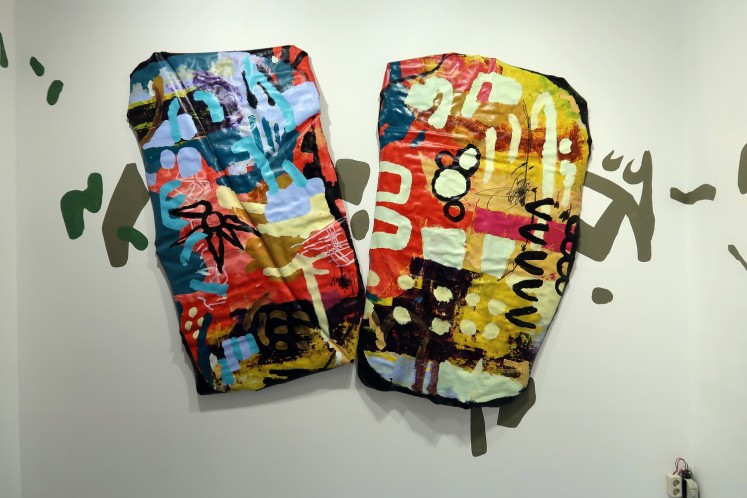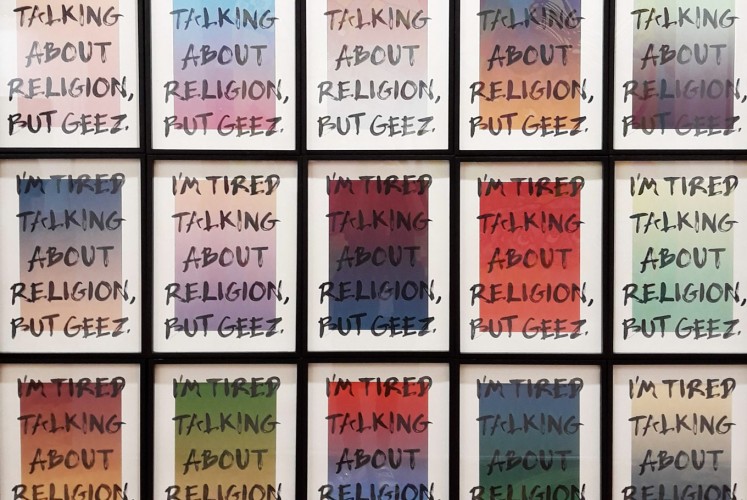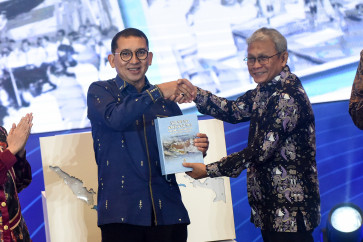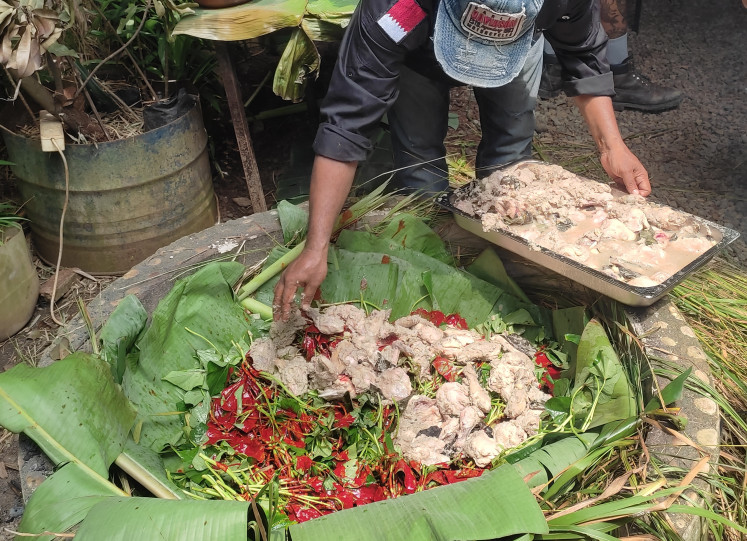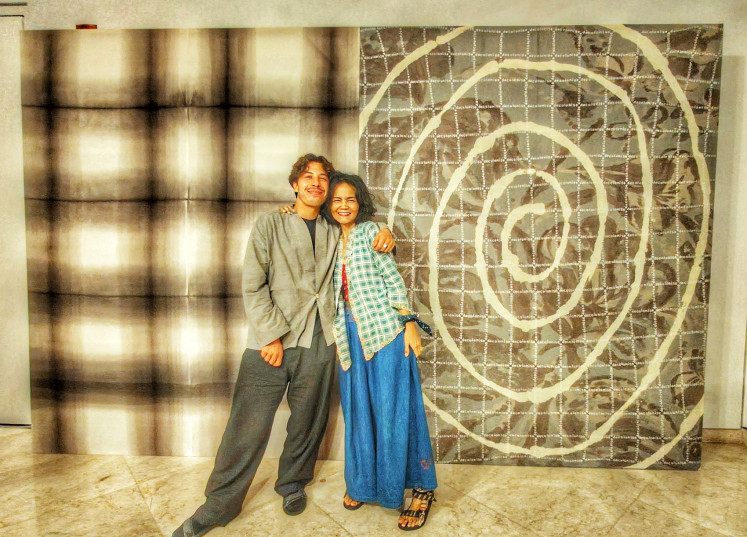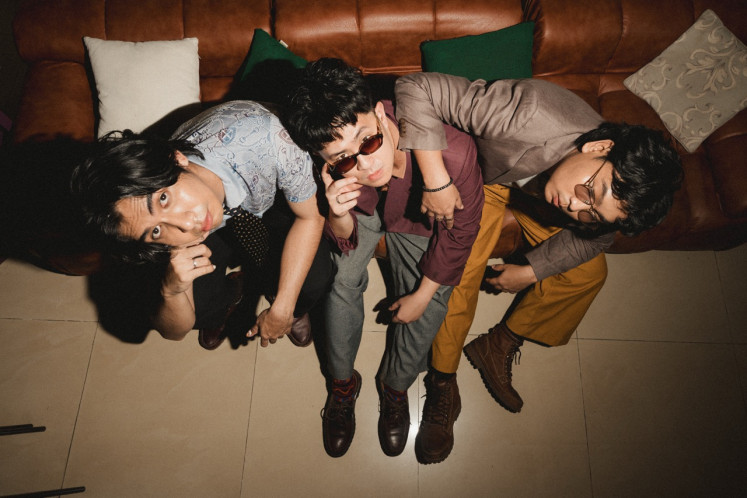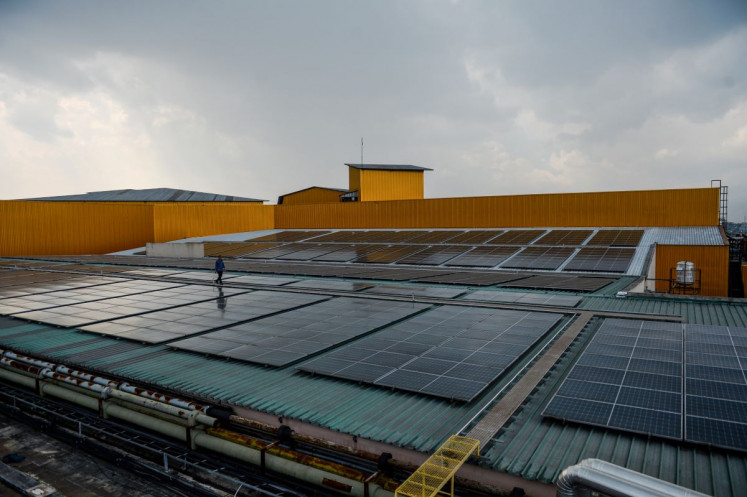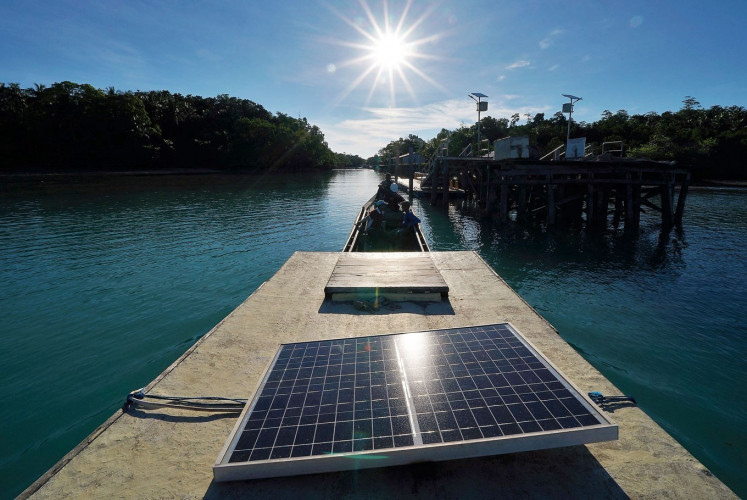Popular Reads
Top Results
Can't find what you're looking for?
View all search resultsPopular Reads
Top Results
Can't find what you're looking for?
View all search resultsArt Jakarta 2018: Present art for all
Art Jakarta has been the city’s premiere contemporary art fair where artists, galleries, collectors and art lovers come to bask in Indonesia’s vibrant art scene.
Change text size
Gift Premium Articles
to Anyone
M
arking its 10th anniversary, this year’s Art Jakarta presented more than 1,000 works from more than 300 artists both local and international to live up to its promise to present a bigger and better experience.
Running from Aug. 2 to 5 at the Ritz-Carlton Pacific Place’s Ballroom, its home since its conception, this year’s fair presented a lineup of prominent and emerging artists as well as interactive workshops, public discussions and performance art for those eager to delve deeper into the world of art.
For the first time ever, the fair’s organizers charged an entrance fee of Rp 50,000 ($3.45) per person, while children under 12 are exempted from the fee. But it did not stop art lovers from coming and enjoying displayed works or having their photos taken in front of particularly Instagrammable pieces.
Ria Lirungan, Harper’s Bazaar Indonesia’s editor-in-chief and the fair organizing committee’s deputy head, said by charging visitors, they had anticipated that the number of visitors might not be as high as last year’s figure.
“However, the most important thing [in terms of visitors] is quality,” Ria said, adding that last year the fair drew over 47,000 visitors in a span of four days.
One visitor, Elisa, said she did not mind paying as she felt the experience of seeing the art was worth the money.
“I enjoy visiting galleries and museums, and some of them charge an entrance fee as well, so I have no problem paying,” said the 25-year-old.
Elisa also had her picture taken with several art pieces she found interesting, like Kemalezedine’s Square Circle Series. “It’s natural that people want to appreciate things they find fascinating, and I guess taking a selfie in front of an artwork is the least we can do, as long as we don’t damage it.”
Reports went viral in May surrounding Japanese artist Yayoi Kusama’s exhibition at Museum MACAN in Jakarta, in which an Instagram story purportedly showed some of the exhibition in a state of disarray.
Art Jakarta 2018 fair consultant Gil Schneider said the organizers had employed security and there were no issues regarding damaged artwork, even with children in attendance.
“The galleries usually would not put anything delicate or easily breakable in a spot where there is a lot of traffic,” Gil said, adding that he considers people taking photos of art as a positive thing.
“They see artworks and get educated by being exposed to a lot of works […] Hopefully it will open up an avenue for people to appreciate art more, to be more interested and to follow an artist like they follow an actress or a singer.”
Making a statement: Many of the artworks featured in the exhibition are a response to societal issues. (JP/Devina Heriyanto)Lans Brahmantyo, founder and creative director of independent publisher Afterhours Books, believed the Indonesian arts scene was on par with others from around the world, but few were willing to invest in it.
Even fewer are those who want to showcase Indonesian art in the form of books, he added.
“Art fairs are very much important to the Indonesian arts scene, but it’s important to reach out to a wider audience, such as programs for school-aged children, so that they can be educated and informed as well as able to appreciate art from a young age,” said Lans, whose Afterhours Books, founded to promote Indonesian arts and culture, had a display at the fair’s Art Bar booth.
Jasdeep Sandhu, owner of Singapore-based Gajah Gallery, said the arts scene should be concerned about the advent of Instagram but it certainly is not fatal for the community.
“If anything, Instagram actually allows all your works to travel around the world, which was not possible 10 years ago. Now in an instant, you post it, you see it in New York,” Jasdeep said.
He noted, however, artists were still more inclined to exhibit in a space so that collectors could see the works in person, and events like Arts Jakarta were necessary as Indonesia needed a good art fair to bring together a strong base of collectors.
“We see Indonesia has a huge potential not only within the country, but also in Southeast Asia and the region beyond […] Indonesia is very important, in the sense there is a huge base of collectors, a very strong base of artists, and without Indonesia the region would be a lot weaker,” Jasdeep said.
The gallery featured fresh new pieces by distinguished Indonesia-based artists Yunizar, Ashley Bickerton and Erizal As, amid works of eight other renowned and rising artists from Southeast Asia.
A post shared by Gajah Gallery (@gajahgallery) on
For the fair, Bickerton debuted new works that continue to engage with his social environment in Bali; tackling exoticism and hedonism in his hyperrealist paintings mixed with found, bric-a-brac objects; while Yunizar reveals a new Coretan (Scribble) piece, wherein his iconic naivete aesthetic is stripped of color such that viewers can focus on the motion of each distinct mark, scribble and scrawl.
Erizal exposed his new explorations with abstraction, in which his paintings exude sublime visual melodies with their bold, lyrical strokes and palettes of vivacious color distinct from his preceding works.
“An event like this would not have been possible 15 years ago. You now have a fair that is very well put together, and the artists are getting a lot of interest, so if you project to the next five to 10 years, things will get much better. It’s a bit of a downtime right now, but after every nightfall there is a very bright dawn.”

